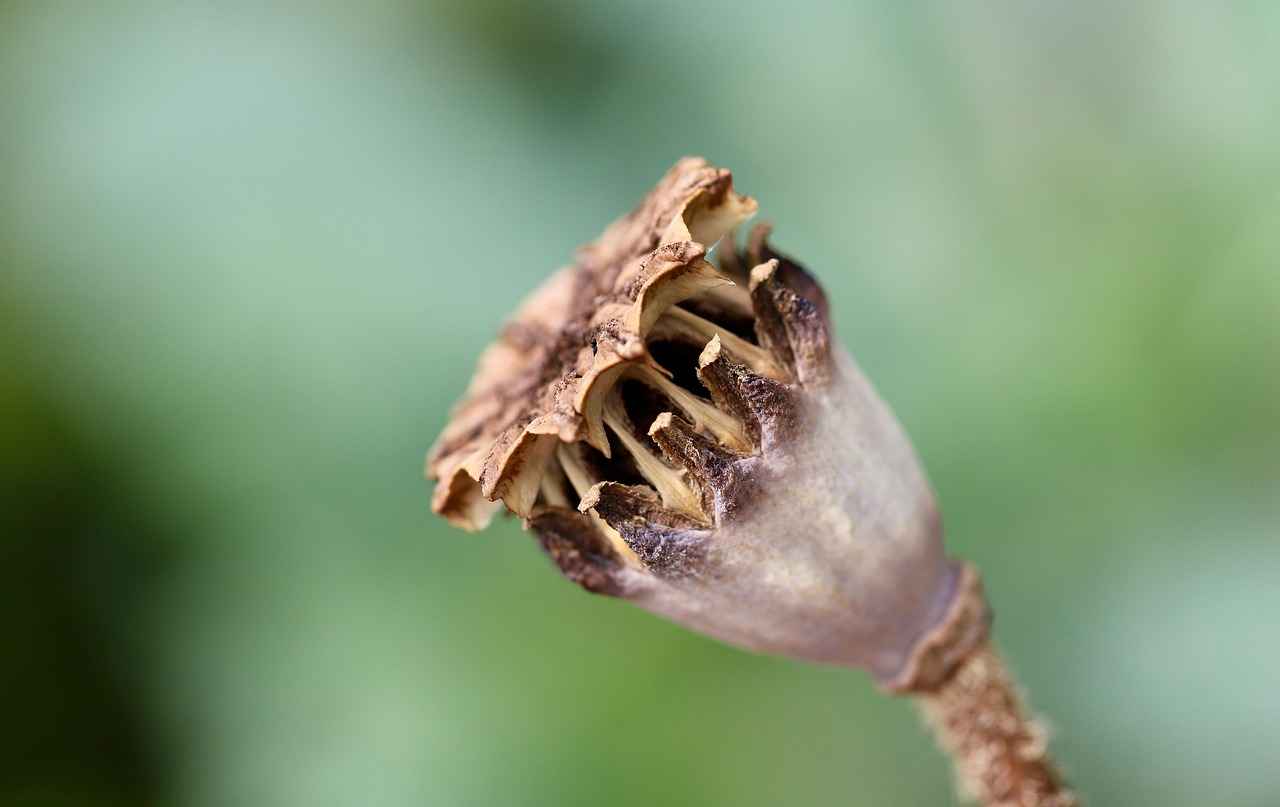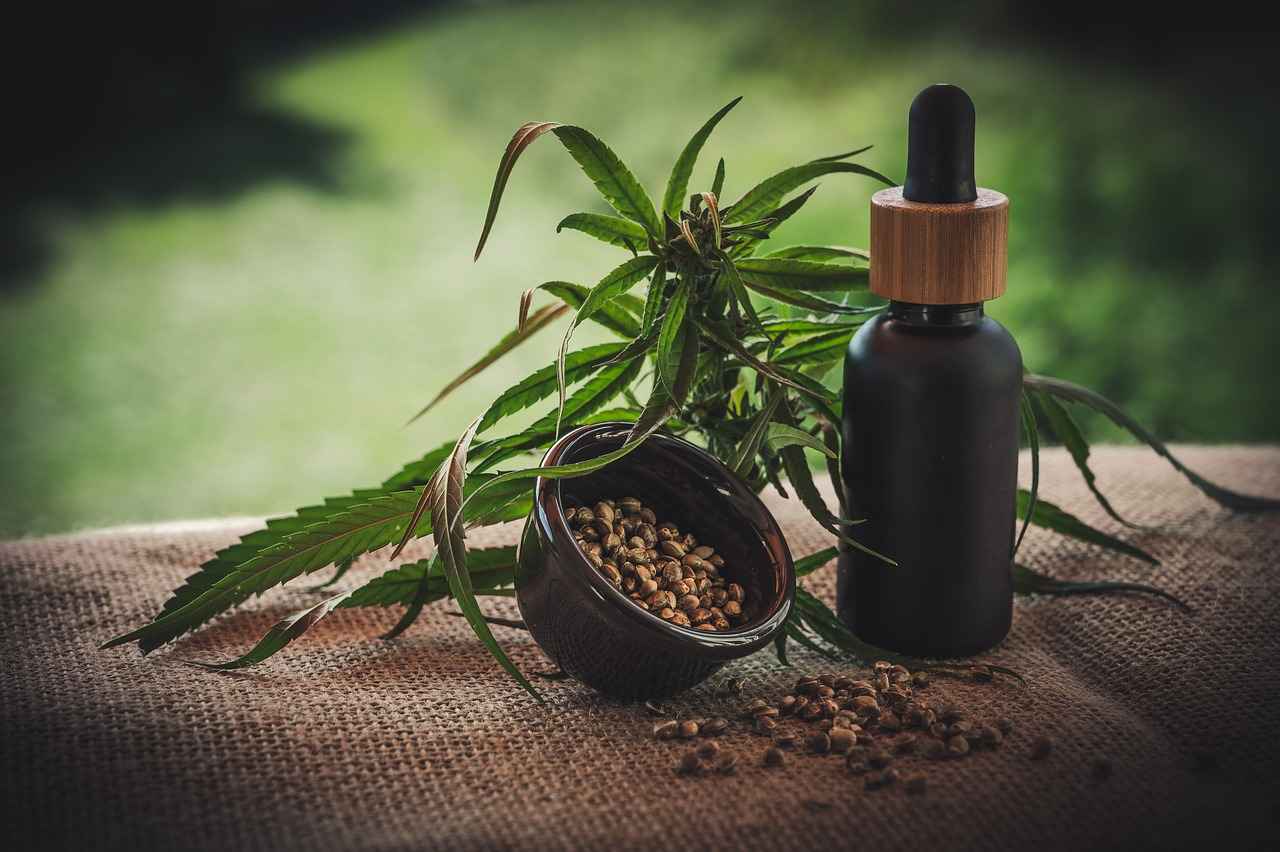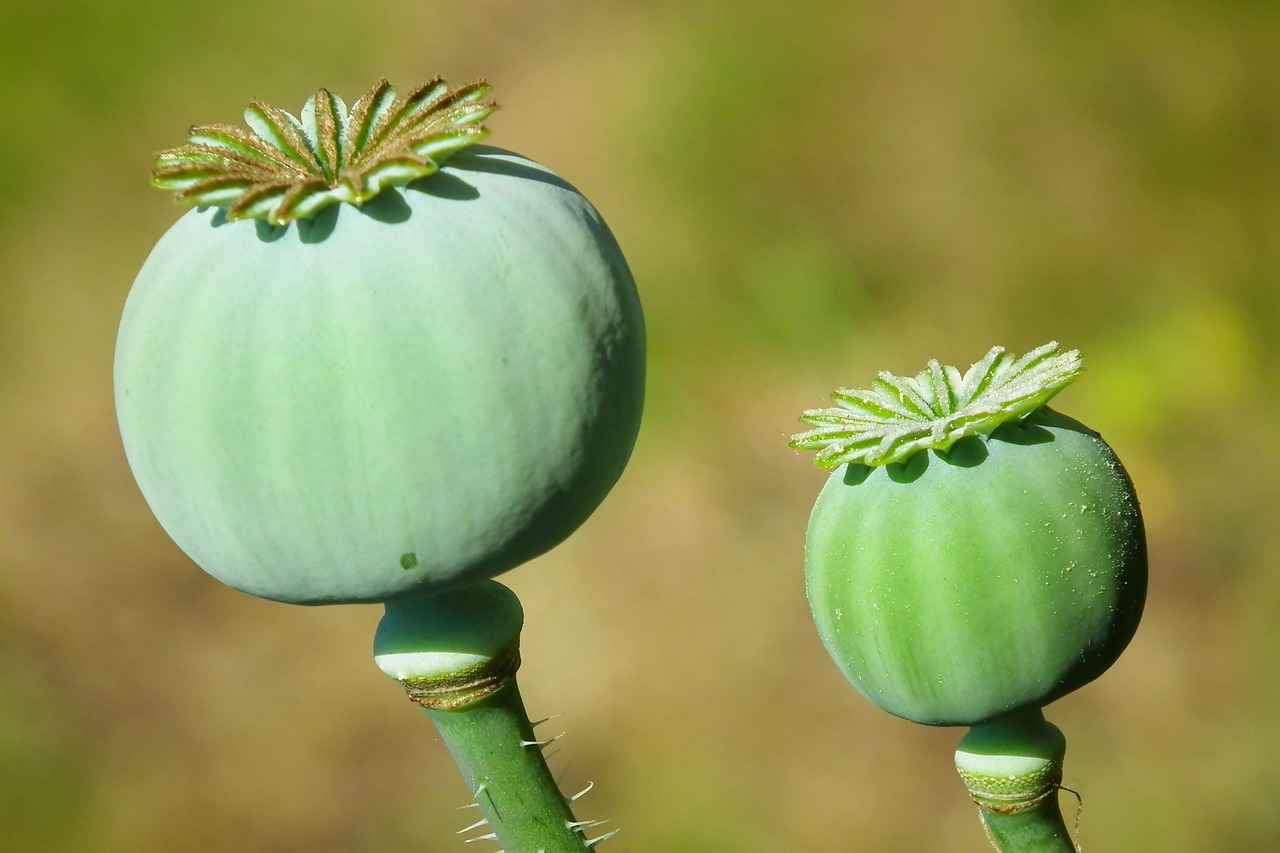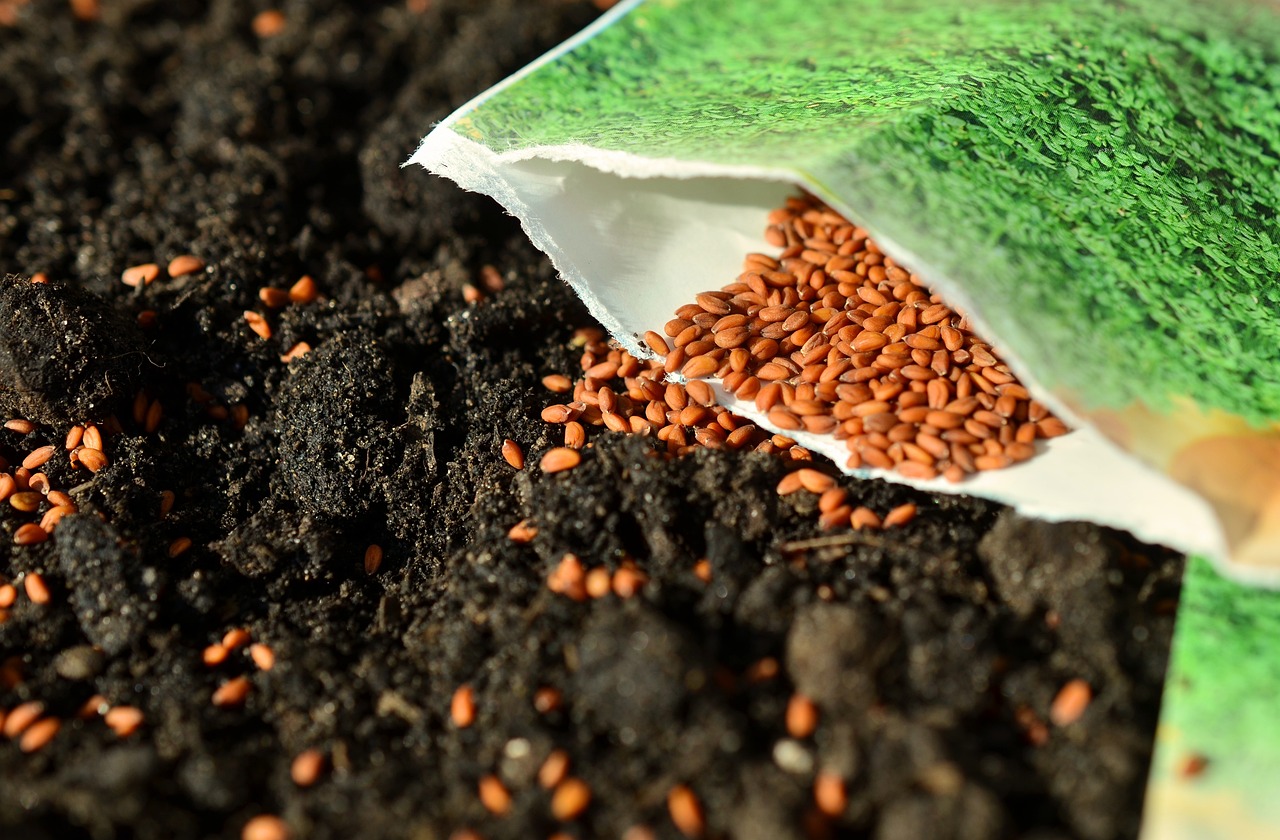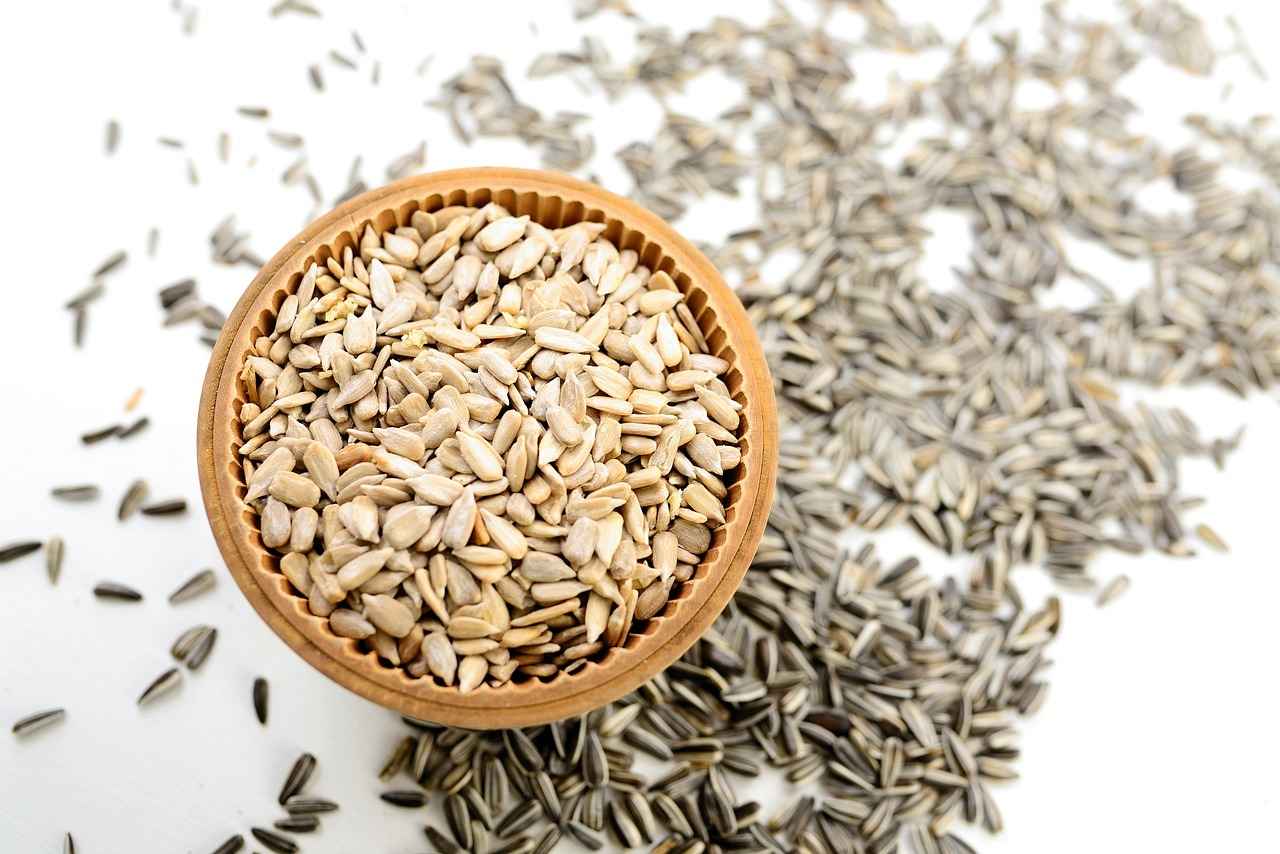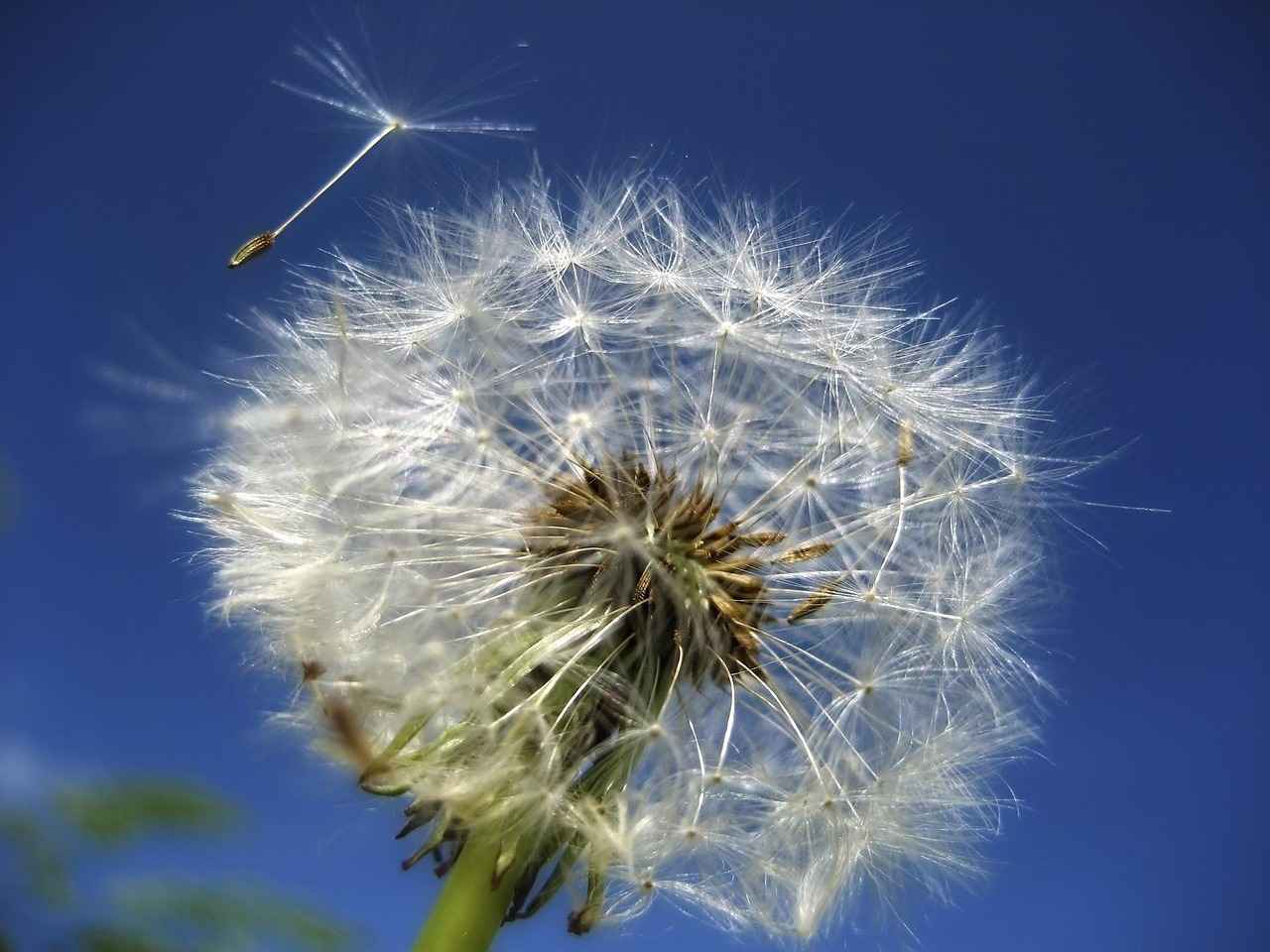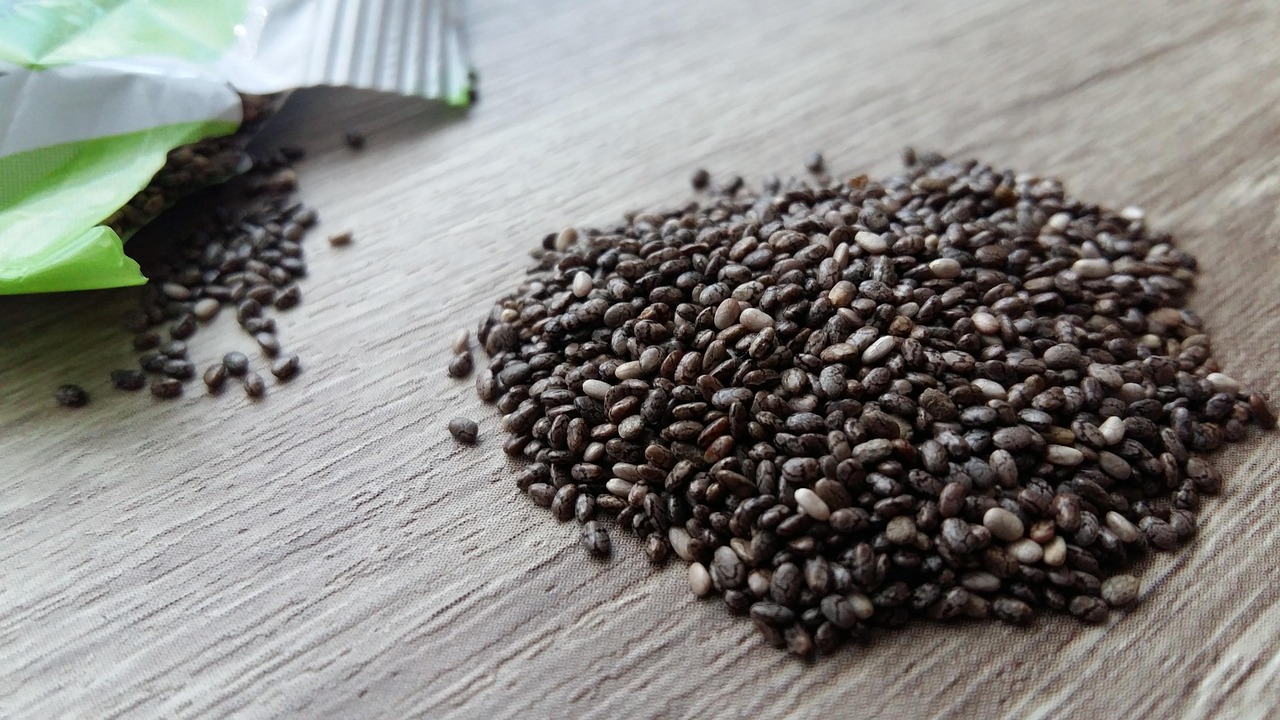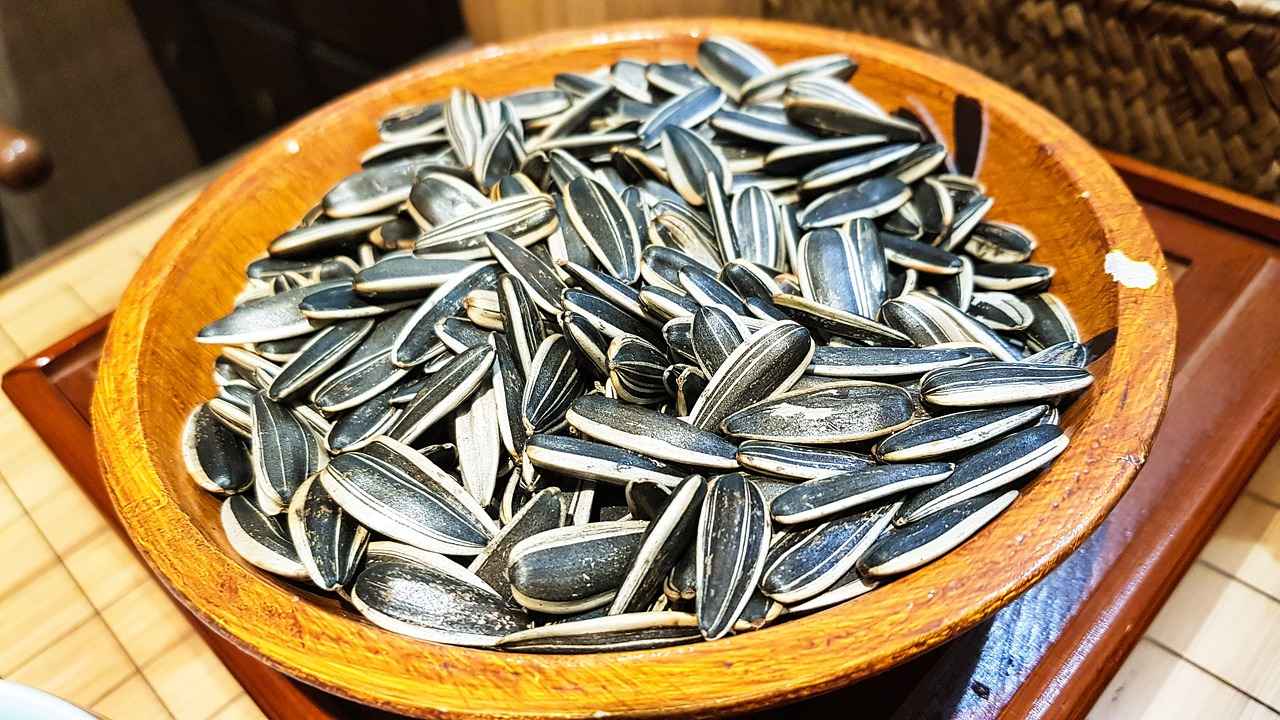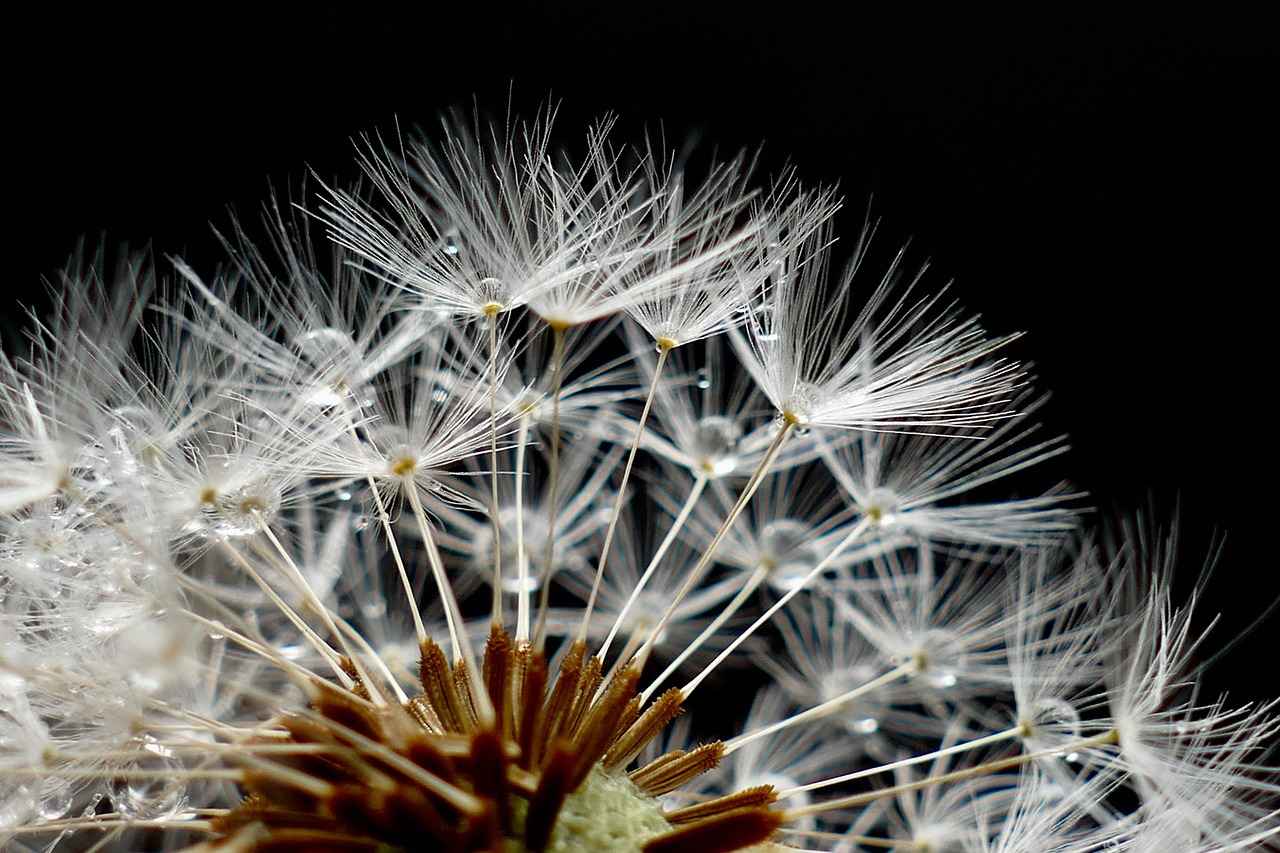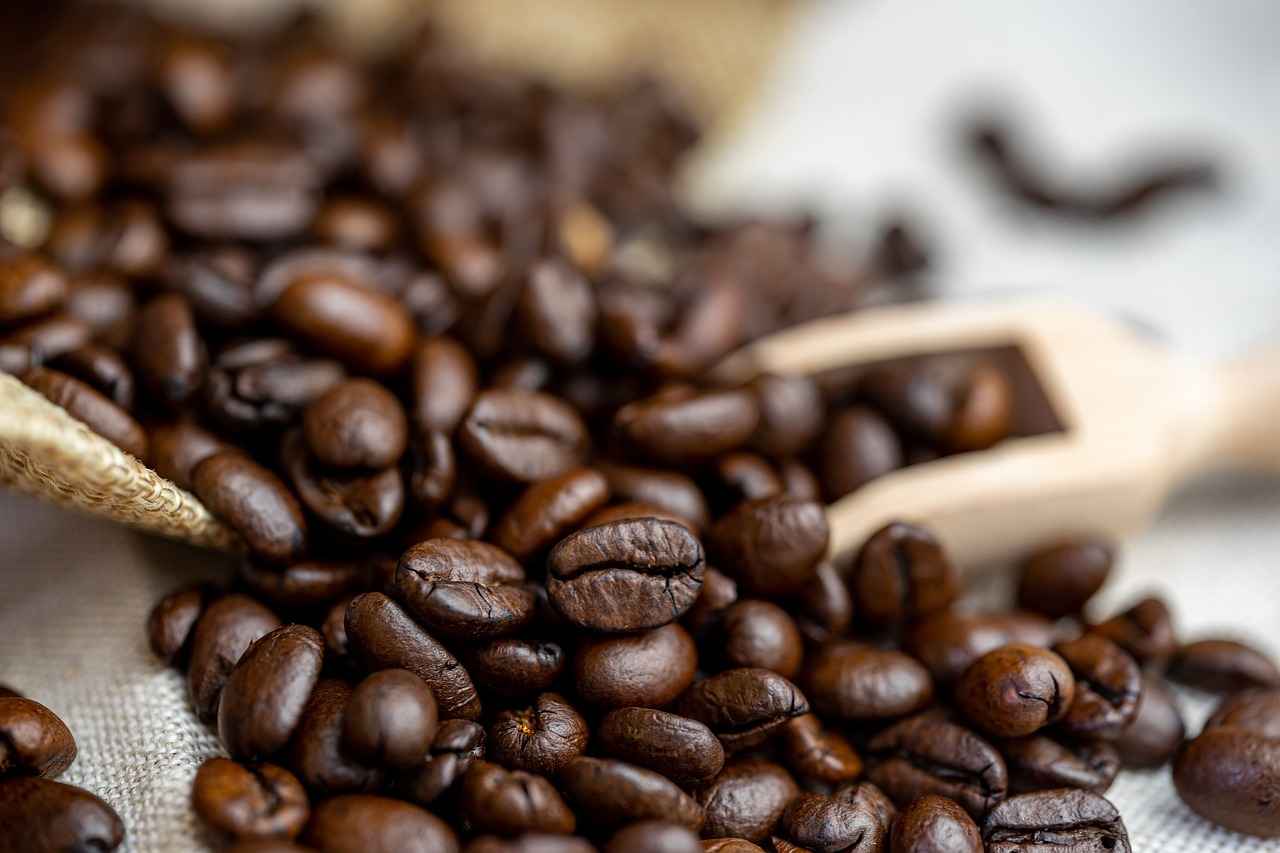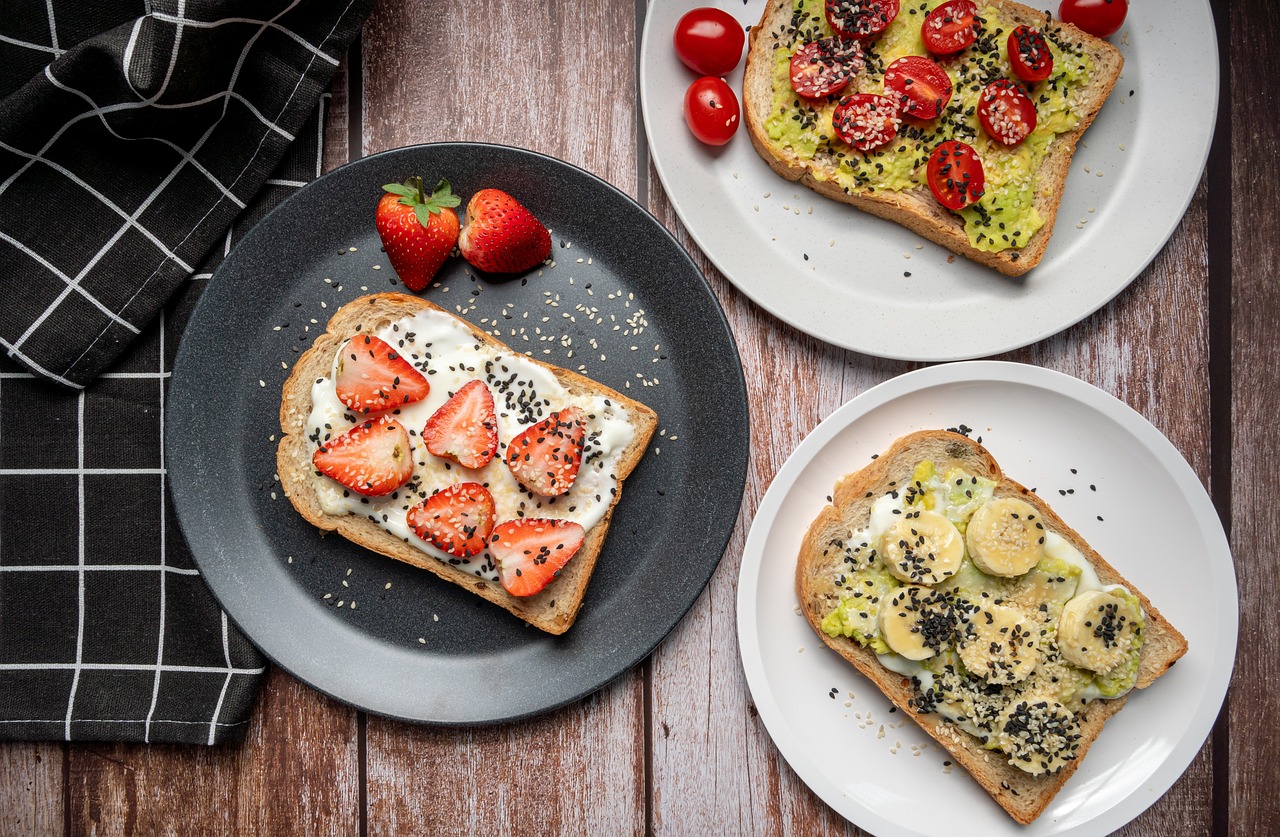This article delves into the fascinating world of chia seeds as a versatile egg replacement in baking. As more people adopt plant-based diets or seek alternatives due to allergies, chia seeds have emerged as a popular choice. This guide provides practical insights, benefits, and tips for successfully incorporating chia seeds into various recipes, ensuring delicious results every time.
Chia seeds serve as an excellent vegan egg substitute, providing a binding quality similar to that of traditional eggs. When mixed with water, these tiny seeds form a gel-like consistency that mimics the properties of eggs in baking. Not only do they act as a binding agent, but they also contribute valuable nutrients such as fiber, omega-3 fatty acids, and antioxidants. This makes them an ideal choice for health-conscious bakers.
Preparing a chia seed egg is incredibly simple. Follow these steps for a perfect chia egg:
- Measure: Use 1 tablespoon of chia seeds.
- Add Water: Combine with 2.5 tablespoons of water.
- Mix: Stir the mixture well to avoid clumping.
- Let Sit: Allow it to sit for about 10-15 minutes until it thickens.
Understanding the conversion ratio is crucial for accurate baking. Generally, 1 chia egg (1 tablespoon of chia seeds mixed with 2.5 tablespoons of water) can replace one large egg in recipes. This ratio ensures that your baked goods maintain the right texture and moisture.
There are numerous advantages to using chia seeds in your baking endeavors:
- Nutritional Powerhouse: Chia seeds are rich in fiber, which aids digestion and promotes a feeling of fullness.
- Heart Health: The omega-3 fatty acids found in chia seeds contribute to heart health and reduce inflammation.
- Allergen-Friendly: Chia seeds are free from common allergens, making them suitable for a variety of dietary restrictions.
Incorporating chia seeds into your recipes can enhance flavor and texture. Here are a couple of delightful options:
- Chia Seed Pancakes: Fluffy and delicious, these pancakes are easy to make. Simply replace the egg in your favorite pancake recipe with a chia egg.
- Chia Seed Muffins: Moist and flavorful, chia seed muffins are a fantastic breakfast option. They can be made with various fruits and spices for added taste.
While using chia seeds as an egg replacement is straightforward, some common mistakes can lead to unsatisfactory results:
- Incorrect Ratios: Failing to measure accurately can affect the texture of your baked goods. Always adhere to the recommended ratios.
- Not Allowing to Set: Skipping the resting period can result in a mixture that doesn’t bind properly. Allow the chia mixture to sit until it thickens.
Storing leftover chia seed egg mixture can be done effectively:
- Refrigeration Tips: Store in an airtight container in the refrigerator for up to one week.
- Freezing Chia Egg Mixture: For longer storage, freeze portions of the mixture in ice cube trays, then transfer to a freezer bag for later use.
By understanding how to use chia seeds as an egg replacement, you can enjoy the benefits of this nutritious seed while creating delicious baked goods that cater to various dietary needs.

What is Chia Seed Egg Replacement?
Chia seeds have gained popularity as a versatile ingredient, especially among those following a vegan or plant-based diet. One of their most notable uses is as an egg replacement in baking. This section delves into the mechanics of how chia seeds function as a binding agent, their nutritional advantages, and why they are an excellent alternative to traditional eggs.
When mixed with water, chia seeds form a gel-like consistency that mimics the properties of eggs. This transformation occurs due to the soluble fiber present in the seeds, which absorbs water and expands. As a result, a chia seed mixture can effectively hold ingredients together, making it a reliable substitute in various recipes, from cookies to pancakes.
In terms of nutrition, chia seeds are a powerhouse. They are rich in omega-3 fatty acids, which are essential for heart health. Additionally, they are packed with fiber, aiding digestion and promoting a feeling of fullness. This makes chia seeds not only a great binding agent but also a nutritious addition to your baked goods.
Moreover, chia seeds are gluten-free and contain no allergens, making them suitable for a wide range of dietary restrictions. They provide a plant-based source of protein, which is particularly beneficial for vegans and vegetarians looking to increase their protein intake without relying on animal products.
Incorporating chia seeds into your baking is straightforward. To replace one egg, mix one tablespoon of chia seeds with three tablespoons of water. Allow this mixture to sit for about 10-15 minutes until it thickens. This simple process not only enhances the texture of your baked goods but also adds a nutritional boost.
In summary, chia seeds serve as an effective and nutritious egg replacement in baking. Their ability to bind ingredients, coupled with their health benefits, makes them a valuable addition to any recipe. Whether you are vegan, have allergies, or simply want to experiment with healthier baking options, chia seeds are worth considering.
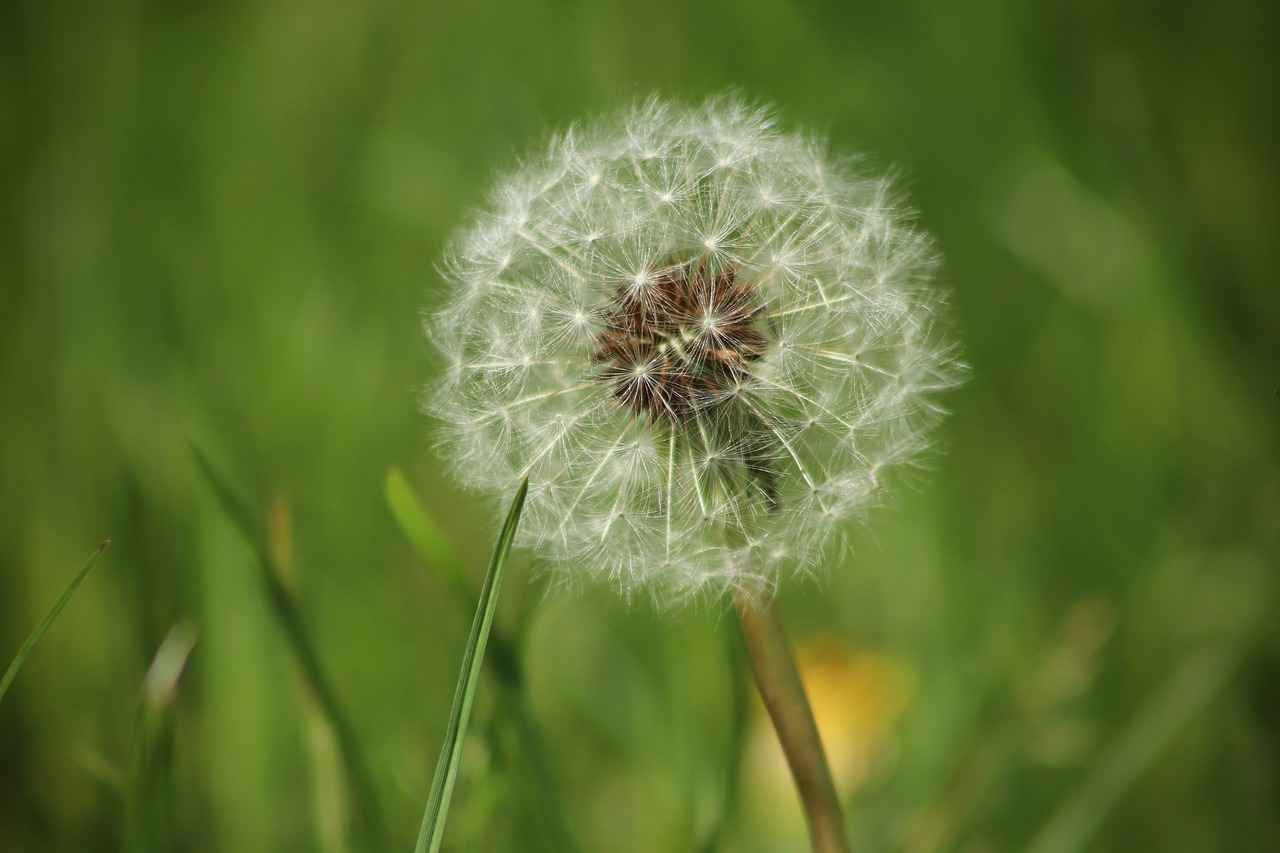
How to Prepare Chia Seed Egg Substitute?
When it comes to baking, finding a suitable egg replacement can be a challenge, especially for those following a vegan diet or managing allergies. One of the most effective substitutes is the chia seed egg. Preparing this simple yet versatile ingredient is straightforward and requires minimal effort. Below, we will explore the step-by-step process to create the perfect chia egg for all your baking needs.
Preparing a chia seed egg is a quick process that can be accomplished in just a few minutes. Here’s how to do it:
- Gather Your Ingredients: You will need:
| Ingredient | Quantity |
|---|---|
| Chia Seeds | 1 tablespoon |
| Water | 3 tablespoons |
- Mix the Ingredients: In a small bowl, combine 1 tablespoon of chia seeds with 3 tablespoons of water. Stir the mixture thoroughly to ensure the seeds are evenly distributed.
- Let It Sit: Allow the mixture to sit for about 5 to 10 minutes. During this time, the chia seeds will absorb the water and form a gel-like consistency. This is crucial for mimicking the binding properties of eggs in your recipes.
- Check the Consistency: After letting it sit, the mixture should be thick and gelatinous. If it appears too runny, you may need to add a little more chia seeds and let it sit again.
- Use in Your Recipe: Once your chia egg is ready, you can use it as a direct substitute for one egg in your baking recipes. Simply fold it into your mixture as you would with a regular egg.
The chia seed egg not only serves as a binding agent but also adds a boost of nutritional value to your baked goods. Chia seeds are rich in omega-3 fatty acids, fiber, and protein, making them an excellent addition to your diet.
In summary, preparing a chia seed egg is an effortless process that can significantly enhance your baking. By following these simple steps, you can create a nutritious and effective egg substitute that works beautifully in a variety of recipes. Whether you’re making pancakes, muffins, or cakes, chia seed eggs are a fantastic option for anyone looking to eliminate eggs from their baking.
Ingredients Needed for Chia Egg
When it comes to baking, finding suitable egg replacements can be a challenge, especially for those following a vegan diet or those with egg allergies. One of the most popular substitutes is the chia seed egg, which is not only effective but also packed with nutrients. To create this versatile ingredient, you only need two simple components: chia seeds and water. Below, we will explore the importance of these ingredients in the preparation process.
- Chia Seeds: The star of the show, chia seeds are tiny black seeds derived from the Salvia hispanica plant. They are rich in omega-3 fatty acids, fiber, and various essential nutrients, making them a powerhouse of health benefits. When mixed with water, chia seeds absorb liquid and swell, forming a gel-like consistency that mimics the binding properties of eggs in recipes.
- Water: The second essential ingredient, water, plays a crucial role in activating the chia seeds. When you combine chia seeds with water, they need time to absorb the liquid fully. This process is vital as it ensures that the seeds expand and create the right texture for your baking needs. The typical ratio is one tablespoon of chia seeds to three tablespoons of water, which yields a mixture that can replace one egg.
To prepare a chia egg, simply mix the chia seeds with water in a bowl and allow it to sit for about 10-15 minutes. During this time, the seeds will absorb the water and form a gel, making it ready to use in your favorite recipes. This simple preparation method not only provides a vegan alternative but also adds nutritional value to your baked goods.
In addition to being a great egg substitute, chia seeds offer a variety of health benefits. They are high in antioxidants, which help combat oxidative stress in the body, as well as being an excellent source of protein. Incorporating chia seeds into your diet can contribute to improved digestive health and provide sustained energy levels, making them an ideal addition to your baking repertoire.
When using chia seeds as an egg replacement, it’s important to remember that they work best in recipes that require a binding agent, such as muffins, pancakes, and cookies. Their neutral flavor allows them to blend seamlessly into various dishes without altering the taste, making them a versatile ingredient in both sweet and savory recipes.
In summary, creating a chia egg is a straightforward process that requires only chia seeds and water. By understanding the significance of these ingredients, you can enhance your baking while adhering to dietary preferences or restrictions. Whether you’re vegan, allergic to eggs, or simply looking for a healthier option, the chia egg is an excellent choice that delivers both functionality and nutrition.
Chia Seeds
have gained immense popularity in recent years, especially among those seeking plant-based alternatives in their diets. These tiny seeds, derived from the Salvia hispanica plant, are not only versatile but also packed with an array of nutritional benefits that make them a powerful ingredient in baking.
Rich in omega-3 fatty acids, fiber, and antioxidants, chia seeds are a nutrient-dense option that can enhance the health profile of baked goods. When mixed with water, chia seeds form a gel-like consistency, mimicking the binding properties of eggs. This unique property makes them an ideal substitute for those who follow a vegan lifestyle or have egg allergies.
- High in Nutrients: Chia seeds are a great source of protein, offering about 4 grams per ounce. They also provide essential minerals such as calcium, magnesium, and iron.
- Hydration: Chia seeds can absorb up to 12 times their weight in water, which helps maintain moisture in baked goods, resulting in a tender texture.
- Blood Sugar Regulation: The high fiber content in chia seeds can help stabilize blood sugar levels, making them a suitable ingredient for healthy baking.
When it comes to using chia seeds as an egg replacement, the process is straightforward. To prepare a chia egg, simply mix one tablespoon of chia seeds with three tablespoons of water. Allow this mixture to sit for about 15 minutes until it thickens into a gel. This gel can replace one egg in most baking recipes.
Chia seeds are not only beneficial for their nutritional value but also for their versatility. They can be seamlessly incorporated into a variety of recipes, from pancakes to muffins and even cookies. Their neutral flavor allows them to blend well without altering the taste of the final product.
For those who are concerned about allergens, chia seeds provide a safe alternative. Unlike eggs, which can cause reactions in some individuals, chia seeds are generally well-tolerated and can be included in a wide range of diets. This makes them a suitable choice for gluten-free and nut-free baking.
In summary, chia seeds are a powerhouse ingredient that offers both functional and nutritional benefits in baking. Their ability to replace eggs while enhancing the healthiness of recipes makes them a valuable addition to any kitchen. Whether you are looking to make a vegan treat or simply want to boost the nutritional content of your baked goods, chia seeds are an excellent choice.
With their myriad of benefits, it’s no wonder that chia seeds have become a staple in modern baking. Embracing this ingredient can lead to healthier, more inclusive recipes that cater to a diverse range of dietary needs.
Water
Water plays a crucial role in the preparation of a chia seed egg replacement, acting as the activating agent that transforms dry chia seeds into a gel-like consistency. This transformation is essential for achieving the desired binding properties that make chia seeds a fantastic egg substitute in various baking recipes.
When chia seeds are mixed with water, they absorb the liquid and swell, forming a thick gel. This process typically takes about 10 to 15 minutes, during which the chia seeds expand to about 10 times their original size. This gel-like texture mimics the binding quality of eggs, making it an ideal replacement in recipes for pancakes, muffins, and even cookies.
To prepare a chia egg, the standard ratio is 1 tablespoon of chia seeds to 2.5 tablespoons of water. This measurement ensures that the seeds have enough liquid to absorb and create the right consistency. It’s important to mix the seeds and water thoroughly to avoid clumping, which can lead to an uneven texture in your baked goods.
Once the chia seeds and water are combined, allow the mixture to sit undisturbed. During this time, the seeds will soak up the water, and you will notice a gel forming. This gel is what provides the binding properties needed in baking, similar to the role of beaten eggs. The longer you allow the mixture to sit, the thicker it will become, but be cautious not to let it sit too long, as it can become overly thick and difficult to incorporate into your batter.
In addition to serving as a binding agent, the chia seed gel also adds moisture to your recipes, which can be particularly beneficial in vegan baking, where traditional eggs are absent. This added moisture helps to prevent baked goods from becoming dry and crumbly, ensuring a more enjoyable texture and flavor.
Furthermore, the use of water in this process is not just about activating the chia seeds; it also plays a vital role in the overall hydration of the recipe. Proper hydration is key to achieving the right consistency in your batter or dough, which can significantly impact the final product. Whether you’re making a cake, bread, or cookies, ensuring that your mixture has the right amount of liquid will help you achieve the best results.
It’s also worth noting that the quality of water used can affect the final outcome. Using filtered or purified water can enhance the taste of your baked goods, while tap water with strong flavors or chemicals might alter the overall flavor profile. Therefore, consider the quality of water you use when preparing your chia egg.
In conclusion, water is not just a simple ingredient in the preparation of a chia seed egg; it is a fundamental component that activates the seeds and ensures your baked goods achieve the best possible texture and flavor. By understanding the role of water in this process, you can master the art of baking with chia seeds and enjoy delicious, egg-free treats.
How Much Chia Seed Egg Equals One Egg?
When it comes to baking, understanding the conversion ratio between chia seeds and traditional eggs is essential for achieving the desired texture and consistency in your recipes. This section will delve into the specifics of how to effectively measure chia seed egg replacements, ensuring your baked goods turn out perfectly every time.
To replace one egg in a recipe, you will need to use a specific amount of chia seeds. The standard conversion is:
- 1 tablespoon of chia seeds + 2.5 tablespoons of water 1 chia egg
This simple ratio allows you to substitute eggs in a variety of baked goods, from cakes to cookies, without compromising on quality.
Accurate measurement is crucial because it affects the binding and moisture levels in your baked goods. Using too little chia seed mixture can lead to crumbliness, while too much can make the final product overly dense. Therefore, adhering to the correct ratio is vital for achieving the perfect balance.
Preparing a chia seed egg is straightforward. Follow these steps:
- Measure out 1 tablespoon of chia seeds.
- Add 2.5 tablespoons of water.
- Mix well and let it sit for about 15 minutes until it forms a gel-like consistency.
This gelatinous mixture will mimic the binding properties of an egg, making it an ideal substitute in your baking recipes.
Here are some practical tips to ensure your chia seed egg replacement works effectively:
- Mix Thoroughly: Ensure that the chia seeds are evenly distributed in the water to prevent clumping.
- Let It Set: Allow the mixture to sit for at least 15 minutes. This waiting period is essential for achieving the right texture.
- Adjust for Recipe Needs: If your recipe calls for multiple eggs, simply multiply the quantities accordingly. For example, for three eggs, use 3 tablespoons of chia seeds and 7.5 tablespoons of water.
When using chia seeds as an egg substitute, there are common pitfalls to watch out for:
- Skipping the Waiting Time: Not allowing the mixture to sit can lead to undesirable textures in your baked goods.
- Incorrect Ratios: Always stick to the recommended measurements to avoid compromising the final product.
By understanding and applying these guidelines, you can confidently use chia seeds as an effective egg replacement in your baking endeavors. Not only does this alternative cater to those with dietary restrictions, but it also adds nutritional benefits to your recipes.
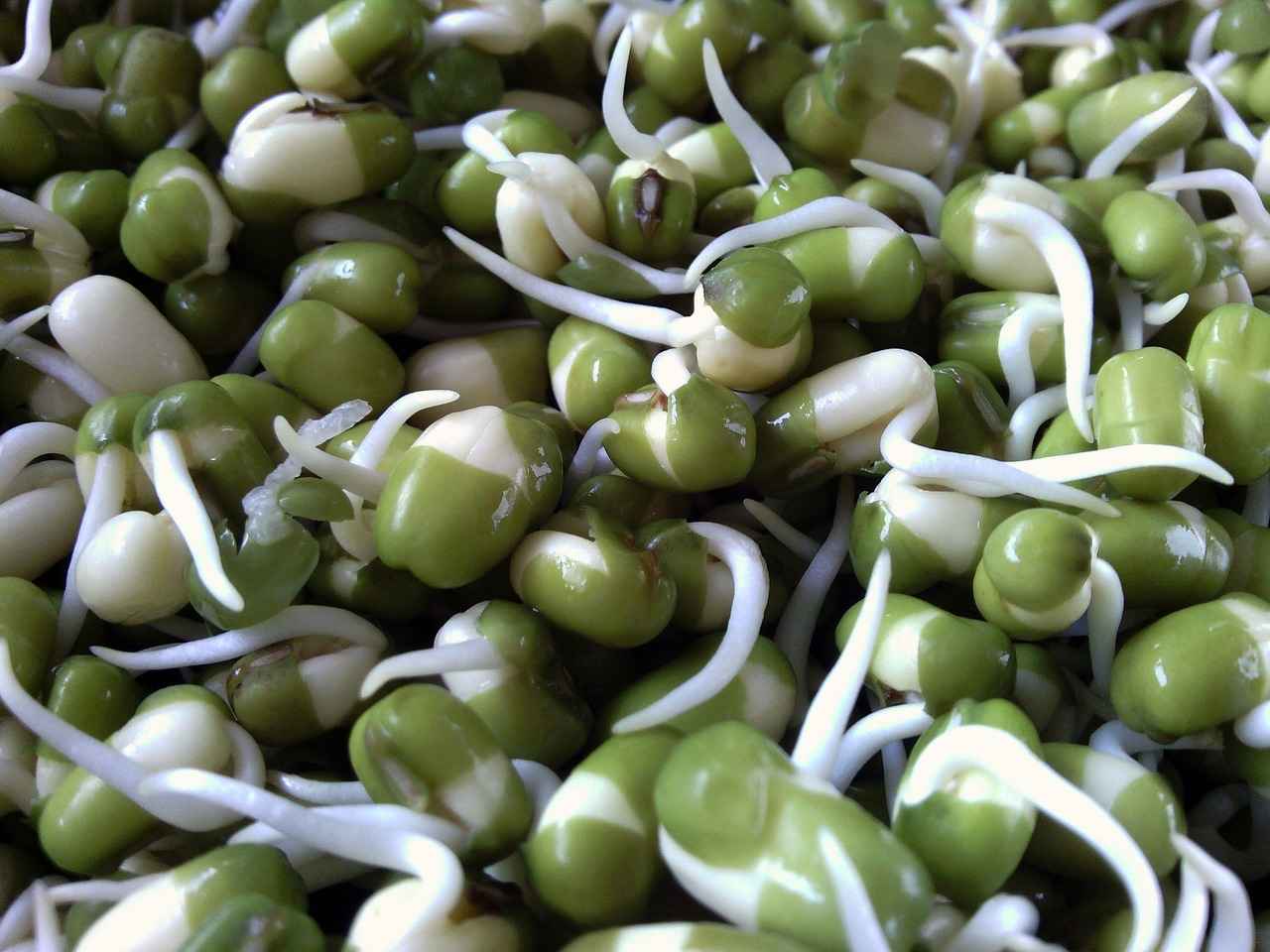
Benefits of Using Chia Seeds in Baking
Chia seeds have gained popularity in recent years, especially among health-conscious bakers. Their versatility and numerous health benefits make them an excellent addition to various baked goods. This section delves into the , highlighting their nutritional advantages and how they can enhance both texture and flavor.
Chia seeds are a powerhouse of nutrients. They are rich in:
- Omega-3 fatty acids: Essential for heart health and brain function.
- Fiber: Aids in digestion and helps maintain a healthy weight.
- Protein: Provides a plant-based protein source, making them ideal for vegans.
- Antioxidants: Combat oxidative stress and inflammation in the body.
Incorporating chia seeds into your baking not only boosts the nutritional profile of your treats but also contributes to a sense of satiety, helping to curb overeating.
When chia seeds are mixed with liquid, they form a gel-like consistency. This property makes them an excellent binding agent in recipes, similar to eggs. The gel helps to retain moisture, resulting in baked goods that are moist and tender. Additionally, chia seeds have a mild, nutty flavor that can enhance the overall taste of your baked items without overpowering them.
For those following a vegan diet or those with allergies to traditional baking ingredients like eggs, chia seeds serve as an effective substitute. They are free from common allergens, making them suitable for a broad range of dietary needs. This inclusivity allows more people to enjoy delicious baked goods without compromising their dietary restrictions.
Chia seeds can be added to a variety of recipes, including:
- Pancakes: Add chia seeds to your pancake batter for added texture and nutrition.
- Muffins: Incorporate chia seeds in muffin mixes for a delightful crunch and moisture.
- Breads: Use chia seeds in bread recipes for enhanced fiber content and a nutty flavor.
Experimenting with chia seeds can lead to delicious discoveries in your baking endeavors.
While chia seeds are easy to use, there are a few common pitfalls to avoid:
- Not allowing the mixture to sit: Failing to let the chia seeds absorb liquid can result in a gritty texture.
- Incorrect ratios: Using too many or too few chia seeds can affect the consistency of your baked goods.
By understanding these factors, you can ensure that your baked creations turn out perfectly every time.
In conclusion, the benefits of using chia seeds in baking are numerous. From their impressive nutritional profile to their ability to enhance flavor and texture, chia seeds are a valuable ingredient for any baker. Their versatility makes them suitable for various recipes, catering to different dietary preferences and restrictions. So, next time you bake, consider incorporating chia seeds for a healthier and more delicious outcome!
Health Benefits of Chia Seeds
Chia seeds have gained immense popularity in recent years, primarily due to their remarkable nutritional profile. These tiny seeds are not just a trendy health food; they are a powerhouse of essential nutrients that can significantly enhance your overall well-being. In this section, we will explore the various health benefits of chia seeds, focusing on their high fiber content, omega-3 fatty acids, and antioxidant properties.
Chia seeds are often referred to as a “superfood” because they are packed with a variety of nutrients that are beneficial for health. They are an excellent source of dietary fiber, which plays a crucial role in digestive health. One ounce (about 28 grams) of chia seeds contains approximately 11 grams of fiber, which can help promote regular bowel movements and prevent constipation.
Another significant health benefit of chia seeds is their high content of omega-3 fatty acids. These essential fats are vital for heart health, as they help to reduce inflammation and lower cholesterol levels. Chia seeds are particularly rich in alpha-linolenic acid (ALA), a type of plant-based omega-3 that can support cardiovascular health. Including chia seeds in your diet can contribute to a balanced intake of healthy fats, which are crucial for maintaining optimal health.
Chia seeds are also loaded with antioxidants, which help protect the body from oxidative stress and free radical damage. Antioxidants are essential for combating chronic diseases and promoting overall health. The presence of these compounds in chia seeds can help to reduce the risk of conditions such as heart disease, diabetes, and even certain types of cancer. By incorporating chia seeds into your meals, you can enhance your antioxidant intake and support your body’s defense mechanisms.
For those looking to manage their weight, chia seeds can be a valuable addition to your diet. The high fiber content in chia seeds helps to promote a feeling of fullness, which can reduce overall calorie intake. When chia seeds absorb liquid, they expand in the stomach, creating a gel-like substance that keeps you satiated for longer periods. This property makes them an excellent ingredient for smoothies, puddings, and baked goods aimed at weight management.
Chia seeds are also a fantastic source of essential minerals, including calcium, magnesium, and phosphorus, which are crucial for maintaining strong bones. Just one ounce of chia seeds provides about 18% of the recommended daily intake of calcium, making them an excellent option for those who are lactose intolerant or following a vegan diet. Incorporating chia seeds into your meals can help support bone density and overall skeletal health.
Adding chia seeds to your diet is easy and versatile. You can sprinkle them on top of salads, mix them into smoothies, or use them as an egg replacement in baking. Their mild flavor allows them to blend seamlessly into various dishes without altering the taste. Additionally, soaking chia seeds in water or milk for a few hours can create a nutritious gel that can be used in puddings or as a thickening agent in recipes.
In conclusion, the health benefits of chia seeds are numerous and varied. From their high fiber content and omega-3 fatty acids to their antioxidant properties and role in weight management, these seeds can play a significant role in enhancing your overall health. By incorporating chia seeds into your daily diet, you can take a proactive step towards achieving better health and well-being.
Vegan and Allergen-Friendly Option
For individuals with dietary restrictions, chia seeds present an excellent alternative in the realm of baking. Their versatility makes them a popular choice for those following a vegan diet or those who need to avoid common allergens. This section delves into the unique properties of chia seeds that cater to various dietary needs, making them ideal for allergen-friendly baking.
Chia seeds are derived from the Salvia hispanica plant and are naturally free from animal products, making them a perfect fit for vegan recipes. Unlike traditional egg replacements, chia seeds not only provide binding properties but also enhance the nutritional profile of baked goods. They are rich in omega-3 fatty acids, fiber, and protein, contributing to a more balanced diet.
Many traditional baking ingredients can trigger allergies, such as eggs, dairy, and gluten. Chia seeds offer a solution by serving as a binding agent without introducing common allergens. This makes them suitable for those with allergies to:
- Eggs: Chia seeds can replace eggs in most recipes, providing similar texture and moisture.
- Dairy: When combined with plant-based milks, chia seeds can enhance the creaminess of batters and doughs.
- Gluten: In gluten-free baking, chia seeds can help improve the structure of baked goods when used with gluten-free flours.
Using chia seeds as an egg substitute is simple and effective. To create a chia egg, combine one tablespoon of chia seeds with three tablespoons of water. Let the mixture sit for about 15 minutes until it forms a gel-like consistency. This gel acts as a binding agent, similar to the role of eggs in traditional recipes.
In addition to being allergen-friendly, chia seeds are a powerhouse of nutrition. They are:
- High in Fiber: Contributing to digestive health and promoting a feeling of fullness.
- Rich in Antioxidants: Helping to combat oxidative stress in the body.
- Source of Essential Fatty Acids: Beneficial for heart health and reducing inflammation.
While chia seeds are a fantastic option for many, it’s essential to use them correctly to achieve the desired results. Overusing chia seeds can lead to overly dense baked goods, so it’s advisable to follow recipes that are specifically designed to incorporate them.
In conclusion, chia seeds stand out as a vegan and allergen-friendly option for those looking to adapt their baking practices. Their unique properties not only replace eggs effectively but also enhance the nutritional value of various recipes. By understanding how to utilize chia seeds properly, you can create delicious and inclusive baked goods that cater to a wide range of dietary needs.
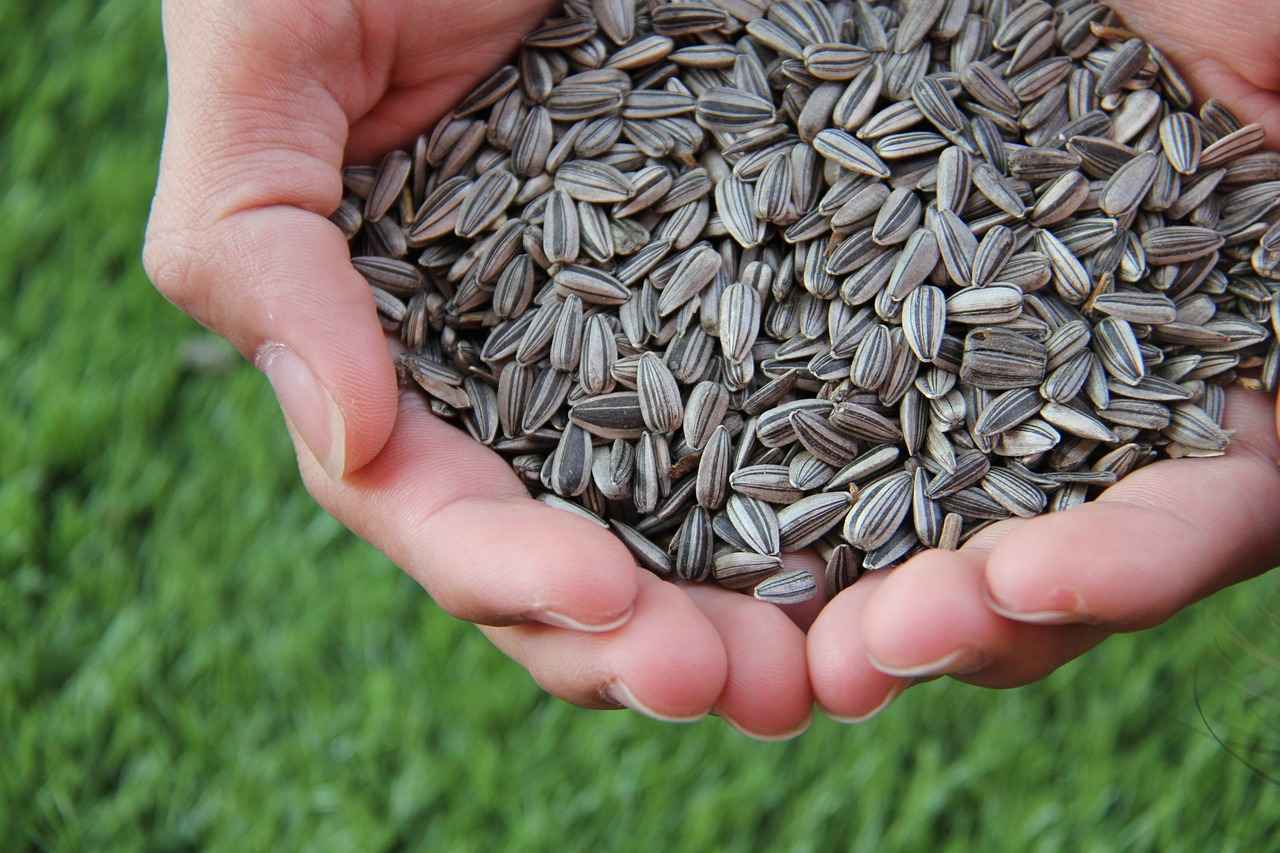
Best Recipes for Chia Seed Egg Replacement
Incorporating a chia seed egg replacement can significantly enhance the texture and flavor of various baked goods. As a versatile ingredient, chia seeds can be utilized in a multitude of recipes, making them a fantastic option for those seeking vegan or allergen-friendly baking solutions. Below are some delicious recipes that showcase the effectiveness of chia eggs in baking.
- Chia Seed Pancakes
Start your day with fluffy and nutritious chia seed pancakes. Here’s a simple recipe:
- Ingredients:
- 1 tablespoon chia seeds
- 3 tablespoons water
- 1 cup flour (whole wheat or gluten-free)
- 1 tablespoon baking powder
- 1 tablespoon sugar (optional)
- 1 cup almond milk (or any milk of choice)
- 1 tablespoon vanilla extract
- Instructions:
- Combine chia seeds and water in a small bowl. Let it sit for about 5-10 minutes until it forms a gel-like consistency.
- In a separate bowl, mix flour, baking powder, and sugar.
- Add almond milk and vanilla extract to the dry ingredients, then fold in the chia egg.
- Cook on a preheated pan over medium heat until bubbles form, then flip and cook until golden brown.
- Chia Seed Muffins
These muffins are not only moist but also packed with nutrients. Try this easy recipe:
- Ingredients:
- 1 tablespoon chia seeds
- 3 tablespoons water
- 1 ½ cups flour (oat or almond flour for gluten-free)
- ½ cup sugar (or maple syrup)
- 1 teaspoon baking soda
- ½ teaspoon salt
- 1 cup mashed bananas or applesauce
- ½ cup coconut oil (melted)
- 1 teaspoon vanilla extract
- Instructions:
- Prepare the chia egg by mixing chia seeds with water and letting it sit.
- In a large bowl, whisk together the flour, sugar, baking soda, and salt.
- Add the mashed bananas, melted coconut oil, vanilla extract, and chia egg to the dry ingredients. Mix until just combined.
- Pour the batter into muffin tins and bake at 350°F (175°C) for 20-25 minutes, or until a toothpick comes out clean.
- Chia Seed Brownies
Indulge in rich, fudgy brownies that are both delicious and healthy:
- Ingredients:
- 1 tablespoon chia seeds
- 3 tablespoons water
- 1 cup almond flour
- ½ cup cocoa powder
- ½ cup maple syrup
- ½ cup melted coconut oil
- 1 teaspoon vanilla extract
- ¼ teaspoon salt
- Instructions:
- Make the chia egg and set aside.
- In a bowl, mix almond flour, cocoa powder, and salt.
- Add maple syrup, melted coconut oil, and vanilla extract, and mix well. Stir in the chia egg.
- Spread the batter in a greased baking dish and bake at 350°F (175°C) for 25-30 minutes.
These recipes not only highlight the versatility of chia seed egg replacements but also provide a delicious way to enjoy baked goods while adhering to dietary restrictions. Experimenting with chia seeds can open a world of baking possibilities!
Chia Seed Pancakes
Pancakes made with chia egg replacement are not only fluffy but also a delightful way to enjoy a healthy breakfast. Incorporating chia seeds into your pancake recipe not only adds a unique texture but also boosts the nutritional value of your meal. This section will provide a simple yet delicious recipe for making chia seed pancakes, along with some tips to ensure they turn out perfectly every time.
Using chia seeds as an egg replacement in pancakes offers several benefits. Firstly, chia seeds are a great source of omega-3 fatty acids, which are essential for heart health. They are also packed with fiber, which aids digestion and promotes a feeling of fullness. Additionally, chia seeds are a vegan option, making these pancakes suitable for those with dietary restrictions.
Here is a straightforward recipe to make delicious chia seed pancakes that serve about four people:
- Ingredients:
- 1 tablespoon chia seeds
- 3 tablespoons water
- 1 cup all-purpose flour (or gluten-free flour)
- 2 tablespoons sugar (optional)
- 1 tablespoon baking powder
- 1/4 teaspoon salt
- 1 cup almond milk (or any milk of choice)
- 2 tablespoons vegetable oil or melted coconut oil
- Prepare the Chia Egg: In a small bowl, combine the chia seeds with water. Stir well and let it sit for about 5-10 minutes until it forms a gel-like consistency.
- Mix Dry Ingredients: In a large mixing bowl, whisk together the flour, sugar, baking powder, and salt.
- Combine Wet Ingredients: In another bowl, mix the almond milk and oil. Add the prepared chia egg to this mixture and stir until well combined.
- Combine Mixtures: Pour the wet ingredients into the dry ingredients and gently mix until just combined. Be careful not to overmix; a few lumps are okay.
- Cook the Pancakes: Heat a non-stick skillet or griddle over medium heat. Pour 1/4 cup of batter for each pancake onto the skillet. Cook until bubbles form on the surface, then flip and cook for an additional 2-3 minutes until golden brown.
To ensure your chia seed pancakes turn out fluffy and delicious, consider the following tips:
- Let the Batter Rest: Allow the batter to sit for a few minutes before cooking. This helps the chia seeds absorb moisture and enhances the texture.
- Adjust Consistency: If the batter seems too thick, add a splash more almond milk. The consistency should be pourable but not too runny.
- Experiment with Flavors: Feel free to add vanilla extract, cinnamon, or even mashed bananas for added flavor.
By following this recipe and tips, you can enjoy fluffy chia seed pancakes that are not just delicious but also packed with nutrients. Whether you enjoy them plain, topped with fruit, or drizzled with maple syrup, these pancakes are sure to become a favorite in your breakfast rotation.
Chia Seed Muffins
are not only a delightful treat but also a nutritious option for those looking to incorporate healthy ingredients into their diet. These muffins can be incredibly moist and flavorful, thanks to the unique properties of chia seeds. In this section, we will delve into a simple yet delicious recipe for chia seed muffins that showcases the versatility of chia seeds in baking.
Chia seeds are a powerhouse of nutrition, making them an excellent addition to muffins. They are rich in fiber, omega-3 fatty acids, and various essential minerals. When baked, chia seeds absorb moisture, contributing to the moisture and texture of the muffins. This section will provide you with a step-by-step recipe for making these delightful muffins.
Here’s a straightforward recipe to create delicious chia seed muffins:
- Ingredients:
- 1 cup all-purpose flour
- 1/2 cup rolled oats
- 1/4 cup chia seeds
- 1/2 cup almond milk (or any milk of choice)
- 1/4 cup maple syrup or honey
- 1/4 cup vegetable oil or melted coconut oil
- 1 teaspoon baking powder
- 1/2 teaspoon baking soda
- 1/4 teaspoon salt
- 1 teaspoon vanilla extract
- Preheat the Oven: Preheat your oven to 350°F (175°C) and line a muffin tin with paper liners or grease it lightly.
- Mix Dry Ingredients: In a large bowl, combine the flour, rolled oats, chia seeds, baking powder, baking soda, and salt.
- Combine Wet Ingredients: In another bowl, whisk together the almond milk, maple syrup, oil, and vanilla extract.
- Combine Mixtures: Pour the wet ingredients into the dry ingredients and stir until just combined. Be careful not to overmix.
- Fill Muffin Tins: Divide the batter evenly among the muffin cups, filling each about 2/3 full.
- Bake: Bake for 18-20 minutes or until a toothpick inserted into the center comes out clean.
- Cool: Allow the muffins to cool in the pan for 5 minutes before transferring them to a wire rack to cool completely.
Feel free to customize your chia seed muffins by adding mix-ins such as nuts, dried fruits, or chocolate chips. These additions can enhance the flavor and provide additional nutrients. Chia seeds not only act as a binding agent but also add a subtle crunch and nutty flavor that complements various ingredients.
To keep your muffins fresh, store them in an airtight container at room temperature for up to three days. For longer storage, consider freezing them. Simply wrap each muffin in plastic wrap and place them in a freezer-safe bag. When you’re ready to enjoy, thaw them at room temperature or warm them in the oven.
In summary, chia seed muffins are a fantastic way to enjoy a healthy, nutritious snack or breakfast option. With their moist texture and flavorful profile, they are sure to become a favorite in your baking repertoire. Experiment with different flavors and enjoy the benefits of chia seeds in your diet!
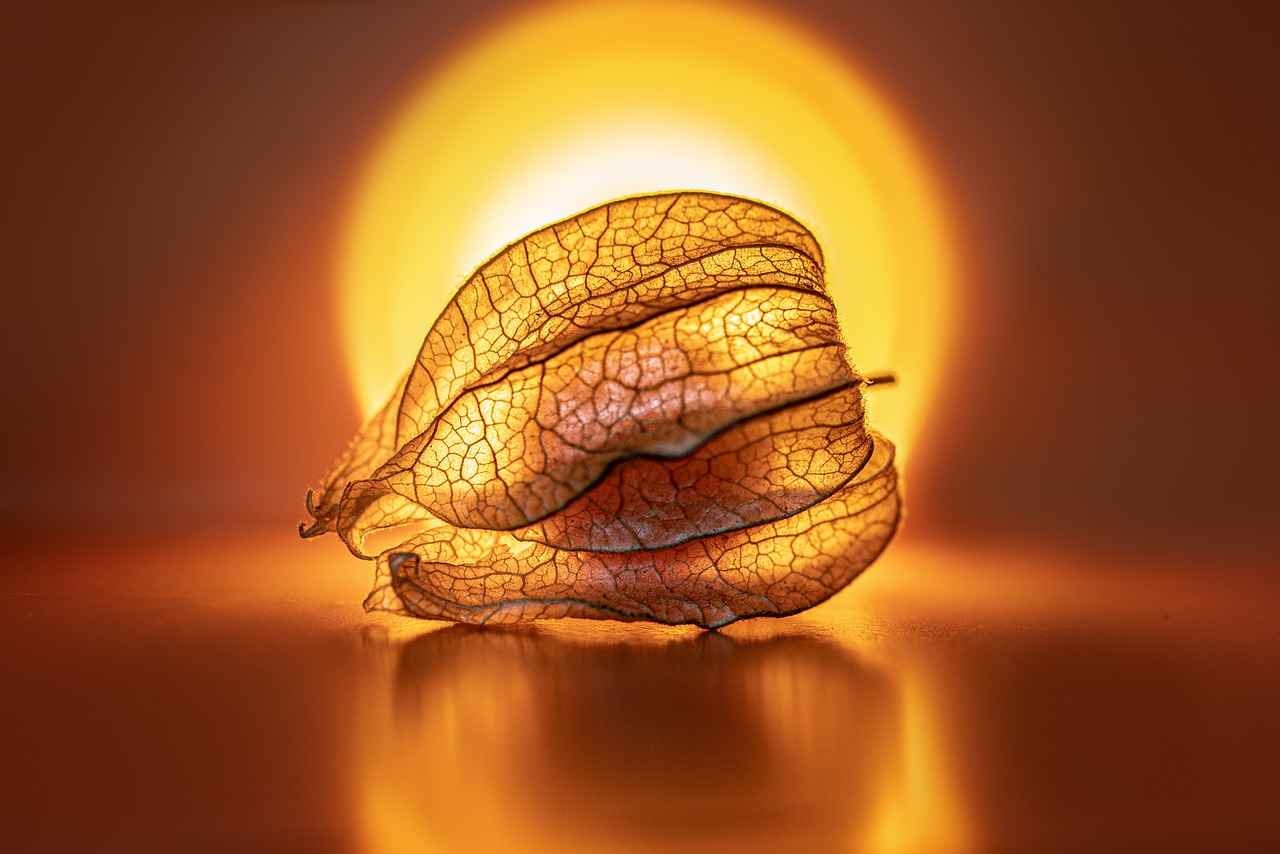
Common Mistakes When Using Chia Seed Egg Replacement
When it comes to baking, chia seeds have emerged as a popular vegan alternative to eggs. However, using chia seeds as an egg replacement can lead to some common pitfalls that may affect the outcome of your baked goods. This section outlines these mistakes and provides practical tips on how to avoid them for successful baking.
- Incorrect Ratios: One of the most frequent mistakes is miscalculating the ratio of chia seeds to water. The standard conversion is 1 tablespoon of chia seeds mixed with 2.5 tablespoons of water, which creates a gel-like consistency similar to that of a beaten egg. If you use too much or too little water, your baked goods may turn out dry or too dense.
- Not Allowing to Set: Another common error is failing to let the chia mixture sit for the recommended time. After mixing, it’s crucial to allow the chia seeds to absorb the water for about 15 minutes. This waiting period allows the seeds to swell and form a gel, which is essential for binding ingredients effectively. Skipping this step can result in a gritty texture in your final product.
- Ignoring Texture Variations: Different recipes may require different textures. For instance, while a thicker chia egg works well in cookies, a thinner consistency might be better suited for pancakes. Experimenting with the water ratio can help you achieve the desired consistency for various baked goods.
- Using Old Chia Seeds: Freshness matters! Old chia seeds may not gel properly, leading to poor binding. Always check the expiration date and store your seeds in a cool, dry place to maintain their quality.
- Overmixing the Batter: When incorporating the chia egg into your batter, be careful not to overmix. Overmixing can lead to tough baked goods instead of the light and fluffy texture you’re aiming for. Mix just until the ingredients are combined.
- Not Considering Flavor: Chia seeds have a mild, nutty flavor that can complement many recipes. However, in some cases, it can alter the taste of delicate baked goods. If you’re concerned about flavor, consider adding vanilla extract or spices to balance the taste.
By being aware of these common mistakes, you can enhance your baking experience with chia seeds as an egg replacement. Remember, practice makes perfect, and with time, you’ll master the art of using chia seeds in your recipes!
Incorrect Ratios
When it comes to baking, precision is key. One of the most critical aspects of successful baking is getting the ratios right. can lead to baked goods that are dense, dry, or even inedible. This section delves into the importance of maintaining proper ratios, especially when using chia seeds as an egg replacement.
Baking is a science, and like any scientific endeavor, it requires accurate measurements. Every ingredient plays a specific role in the overall structure and flavor of the final product. For instance, if you use too much chia seed egg replacement, the texture of your muffins or pancakes can become overly gummy. Conversely, using too little may result in a lack of binding, causing your baked goods to crumble.
When substituting chia seeds for eggs, the common ratio is 1 tablespoon of chia seeds mixed with 2.5 tablespoons of water to replace one egg. This mixture must sit for about 10-15 minutes to form a gel-like consistency. Not allowing the mixture to set can lead to improper binding, affecting the overall texture of your baked goods.
- Using Whole Seeds Instead of Ground: Whole chia seeds can be less effective as a binding agent. Ground chia seeds create a smoother mixture that binds better.
- Ignoring the Setting Time: Skipping the setting time can result in a mixture that doesn’t gel properly, leading to poor texture.
- Incorrect Water Amount: Too much water can dilute the binding properties, while too little can lead to a dry final product.
To ensure your chia seed egg replacement works effectively, consider the following tips:
- Measure Accurately: Use a kitchen scale for precision when measuring chia seeds and water.
- Keep a Consistent Ratio: Stick to the recommended ratio unless you are experimenting with a recipe that specifies otherwise.
- Practice Makes Perfect: Don’t be discouraged by initial failures. Baking is a learning process, and with practice, you’ll master the art of using chia seeds in your recipes.
Understanding the importance of accurate ratios when using chia seeds as an egg replacement is essential for achieving optimal results in your baking endeavors. By paying careful attention to measurements and following best practices, you can ensure that your baked goods turn out delicious every time.
Not Allowing to Set
When it comes to baking, precision and technique are crucial for achieving the desired results. One common mistake that many bakers make is not allowing the chia mixture to set. This oversight can significantly impact the texture and overall quality of your baked goods. In this section, we will delve into the reasons why letting the chia mixture sit is essential for baking success.
Chia seeds, when combined with water, create a gel-like substance that mimics the binding properties of eggs. This transformation occurs as the chia seeds absorb liquid and swell, forming a thick consistency. However, if you skip the setting process, the chia seeds may not fully hydrate, leading to a grainy texture in your final product. This is particularly important for recipes where a smooth consistency is desired, such as in cakes or muffins.
Allowing the chia mixture to rest for at least 15-20 minutes is recommended. During this time, the seeds will absorb the water and expand, creating a cohesive gel. This gel not only helps bind ingredients together but also adds moisture to your baked goods, resulting in a fluffier and more tender texture.
In addition to improving texture, letting the chia mixture set also enhances the nutritional profile of your baked goods. Chia seeds are rich in omega-3 fatty acids, fiber, and antioxidants. When allowed to hydrate properly, these nutrients become more bioavailable, offering greater health benefits. This is particularly advantageous for those looking to incorporate more plant-based nutrition into their diets.
Moreover, failing to let the mixture sit can lead to uneven distribution of chia seeds in your batter. This can result in some bites being overly chewy while others lack the desired texture altogether. For instance, in recipes like chia seed pancakes or muffins, achieving a consistent texture is key to enjoying the full flavor and experience of the dish.
To ensure that your chia egg replacement is effective, follow these simple steps:
- Measure the chia seeds and water: Use a ratio of 1 tablespoon of chia seeds to 2.5 tablespoons of water for one egg replacement.
- Mix thoroughly: Stir the chia seeds and water together in a small bowl until well combined.
- Let it sit: Allow the mixture to rest for 15-20 minutes, stirring occasionally to prevent clumping.
By adhering to this process, you will maximize the benefits of using chia seeds as an egg replacement. This simple step can make a significant difference in the quality of your baked goods, ensuring that they are not only delicious but also nutritious.
In summary, allowing the chia mixture to set is a crucial step in the baking process. It enhances the texture, improves the nutritional value, and ensures even distribution throughout your batter. By following the proper preparation techniques, you can achieve baking success with chia seed egg replacements, making your recipes both satisfying and wholesome.

How to Store Chia Seed Egg Mixture?
When it comes to using chia seed egg mixture in your baking, knowing how to store any leftovers is crucial. Proper storage ensures that the mixture retains its quality and effectiveness for future use. This section provides essential tips on how to store your chia seed egg mixture correctly, so you can enjoy its benefits without compromising on quality.
Storing your chia seed egg mixture correctly is vital for maintaining its binding properties and overall freshness. If not stored properly, the mixture can become too thick or dry, making it less effective as an egg replacement in your recipes.
- Use an Airtight Container: Always transfer the chia seed egg mixture into an airtight container. This helps prevent moisture loss and protects it from absorbing odors from the refrigerator.
- Label and Date: To keep track of freshness, label the container with the date you prepared the mixture. Chia seed egg mixtures can typically last up to 5-7 days in the fridge.
- Check Consistency: Before using the refrigerated mixture, check its consistency. If it has thickened too much, simply add a small amount of water and stir to restore its original texture.
Yes, freezing is an excellent option if you have a larger batch of chia seed egg mixture that you won’t use within a week. Here’s how to do it effectively:
- Portioning: Divide the mixture into individual portions using ice cube trays or small containers. This allows you to thaw only what you need for your recipes.
- Wrap Tightly: Ensure that each portion is tightly sealed to prevent freezer burn. Using freezer-safe bags can also be a good option.
- Thawing Process: When ready to use, thaw the frozen chia egg mixture in the refrigerator overnight or at room temperature for a few hours. Stir well before using to ensure an even consistency.
If your stored chia seed egg mixture has thickened or separated, don’t worry! Here are some simple steps to revive it:
- Add Water Gradually: Start by adding a small amount of water to the mixture. Stir continuously until you achieve the desired consistency.
- Blend for Smoothness: If necessary, use a blender or whisk to ensure the mixture is smooth and well combined.
- Leaving it Uncovered: Always cover your chia mixture. Leaving it uncovered can lead to drying out or contamination.
- Ignoring Expiration: Pay attention to how long the mixture has been stored. Using it beyond its shelf life can affect the quality of your baked goods.
By following these storage tips, you can ensure that your chia seed egg mixture remains effective and fresh for your baking needs. Whether you choose to refrigerate or freeze, proper storage will help you make the most of this versatile egg replacement.
Refrigeration Tips
When it comes to baking with chia seed egg replacements, proper storage is essential to maintain the quality and freshness of your mixture. One of the best ways to ensure that your chia egg mixture stays viable for future use is through proper refrigeration. This section provides practical refrigeration tips to help you extend the shelf life of your chia egg mixture without sacrificing its quality.
Refrigeration slows down the growth of bacteria and mold, which can spoil your chia egg mixture. By keeping it in a cool environment, you can preserve its texture and nutritional benefits for a longer period. The ideal temperature for refrigeration is typically between 32°F and 40°F (0°C to 4°C).
- Use an Airtight Container: Always store your chia egg mixture in a clean, airtight container to prevent contamination and moisture absorption.
- Label and Date: If you plan to store multiple mixtures or ingredients, labeling your container with the date of preparation helps you keep track of freshness.
- Keep Away from Strong Odors: Chia seeds can absorb odors from other foods, so it’s best to place the container away from strong-smelling items in your fridge.
When stored properly in the refrigerator, your chia egg mixture can last up to 5 to 7 days. However, always check for any changes in texture or smell before using it. If the mixture appears overly thick or has an off odor, it’s best to discard it.
- Unpleasant Smell: A sour or rancid smell indicates that the mixture has gone bad.
- Change in Color: If the mixture darkens significantly, it may be a sign of spoilage.
- Separation: While some separation is normal, excessive liquid on top can indicate that the mixture is no longer good.
If your refrigerated chia egg mixture has thickened too much, you can easily revive it by adding a small amount of water. Stir it well until you achieve the desired consistency. This allows you to use the mixture effectively in your baking recipes.
In addition to refrigeration, consider freezing your chia egg mixture if you want to extend its shelf life even further. Freezing can keep it fresh for up to 3 months. Just remember to thaw it in the refrigerator before use.
In summary, proper refrigeration is a simple yet effective way to extend the shelf life of your chia egg mixture. By following these tips, you can ensure your mixture remains fresh, safe, and ready for your next baking adventure.
Freezing Chia Egg Mixture
When it comes to utilizing chia seeds as an egg substitute in your baking, proper storage of the chia egg mixture is essential for maintaining its quality and effectiveness. One effective method of storage is freezing. This section will guide you through the process of freezing your chia egg mixture, ensuring you have a convenient option available whenever you need it.
Freezing your chia egg mixture allows you to prepare it in advance, saving you time during your baking sessions. This is especially useful for those who bake frequently or in large batches. Additionally, freezing helps preserve the nutritional benefits of chia seeds, ensuring that you can enjoy their health advantages even after some time has passed.
Freezing chia egg mixture is a straightforward process. Here’s a step-by-step guide to ensure optimal results:
- Prepare the Mixture: Start by mixing your chia seeds with water in the appropriate ratio (typically 1 tablespoon of chia seeds to 2.5 tablespoons of water). Allow it to sit for about 10-15 minutes until it forms a gel-like consistency.
- Portion the Mixture: Once your chia egg is ready, consider dividing it into individual portions. Using an ice cube tray is an excellent option, as it allows you to freeze small quantities that can be easily thawed later.
- Transfer to Freezer: Pour the chia mixture into the ice cube tray and place it in the freezer. Allow it to freeze completely, which usually takes a few hours.
- Store in a Container: After the mixture has frozen, pop the chia egg cubes out of the tray and transfer them to a freezer-safe container or a resealable plastic bag. Be sure to label the container with the date for future reference.
The chia egg mixture can be stored in the freezer for up to 3 months without losing its quality. However, for the best results, it is advisable to use it within the first month. This ensures that you are using the mixture while it is still fresh and retains its optimal texture and binding properties.
When you’re ready to use your frozen chia egg mixture, thawing it is simple:
- Refrigerator Method: Transfer the desired amount of chia egg cubes from the freezer to the refrigerator and allow them to thaw overnight.
- Room Temperature Method: Alternatively, you can let the cubes sit at room temperature for about 30 minutes to an hour until they are fully thawed.
Once thawed, give the mixture a good stir to restore its consistency before incorporating it into your baking recipes. This will ensure that the chia egg functions as an effective binder in your dishes.
- Use Airtight Containers: To prevent freezer burn, always store your chia egg mixture in airtight containers or bags.
- Avoid Over-Freezing: While it can last up to 3 months, try to use the mixture sooner for the best results.
- Keep Track of Portions: Label your containers with the number of portions and the date to stay organized.
By following these guidelines, you can effectively freeze your chia egg mixture, ensuring that you always have a reliable egg substitute ready for your baking adventures.
Frequently Asked Questions
- What is a chia seed egg, and how does it work?
A chia seed egg is a simple mixture of chia seeds and water that acts as a vegan substitute for eggs in baking. When mixed with water, chia seeds form a gel-like consistency, providing binding properties similar to eggs, making them perfect for recipes like pancakes and muffins.
- How do I prepare a chia seed egg?
Preparing a chia seed egg is super easy! Just mix 1 tablespoon of chia seeds with 2.5 tablespoons of water. Let it sit for about 5-10 minutes until it thickens into a gel. That’s it! You’re ready to use it in your baking.
- Can I use chia seed eggs in any recipe?
While chia seed eggs work well in many recipes, they are best suited for baked goods like muffins, pancakes, and cookies. However, for recipes that require a fluffy texture, such as soufflés, they might not be the best choice.
- How long can I store the chia seed egg mixture?
You can store leftover chia seed egg mixture in the refrigerator for up to a week. Just make sure to keep it in an airtight container to maintain freshness.
- Are there any common mistakes to avoid when using chia seed eggs?
Yes! One common mistake is not allowing the mixture to set properly. Always let it sit for a few minutes to achieve the right consistency. Also, be mindful of the ratios; using too much or too little can affect your baked goods!
